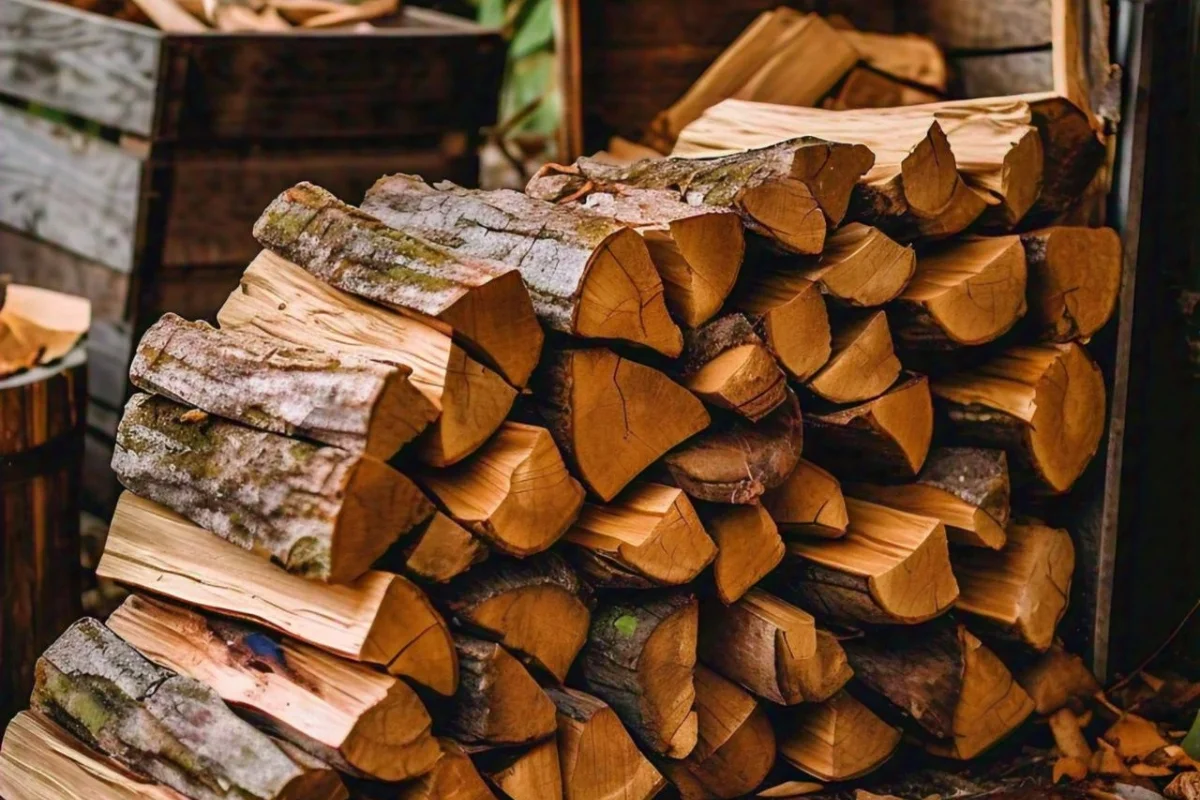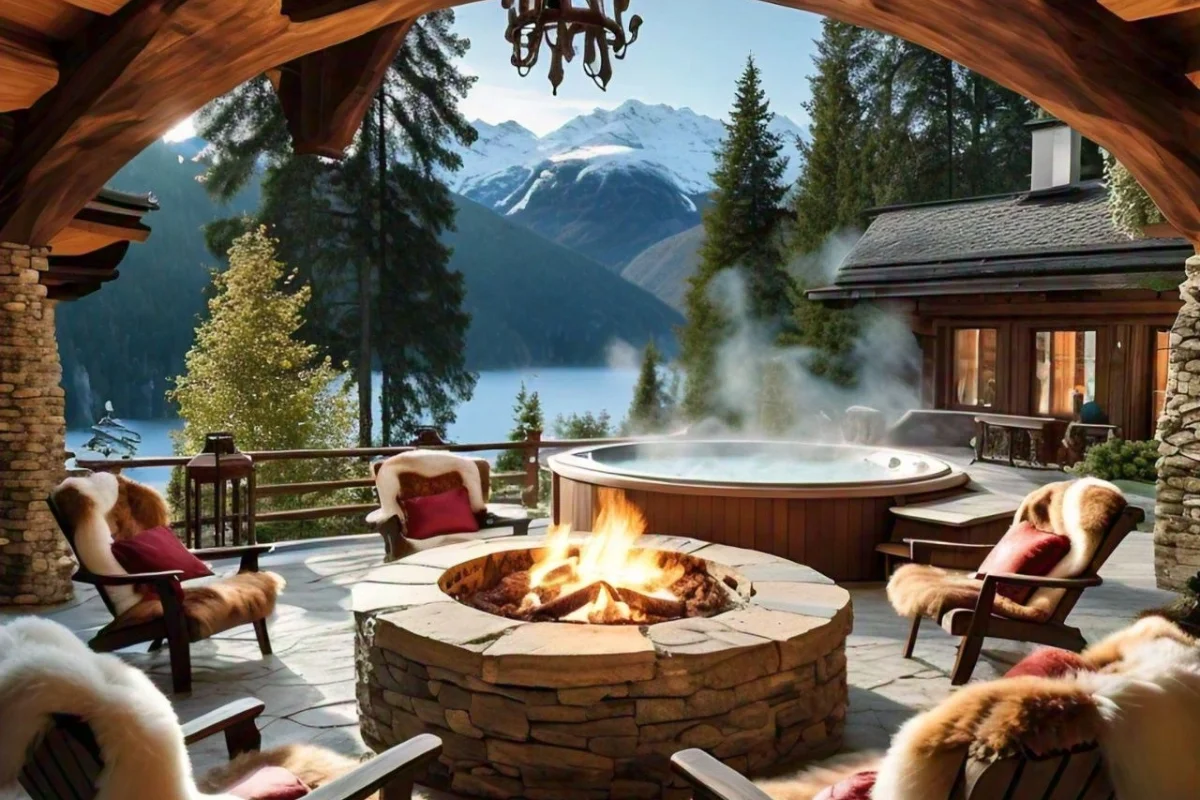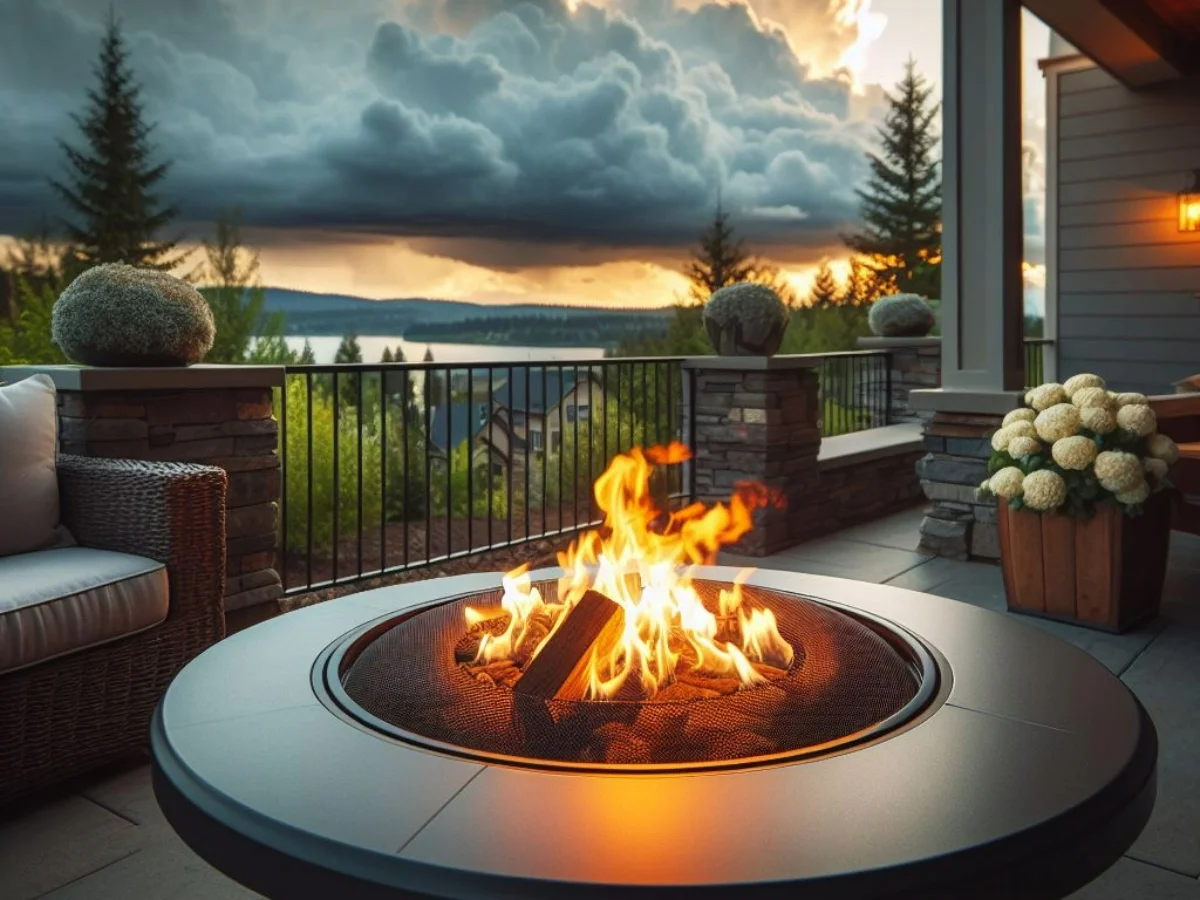
Over the years propane fire pits have become increasingly popular for outdoor heating and creating a cozy atmosphere. However despite the appeal of crackling fires and pleasant gatherings, concerns about safety naturally come to mind. The question often arises; are propane fire pits safe? To put it simply; Yes when used correctly and with precautions in place, propane fire pits can be a great addition to your outdoor area. They offer warmth, ambiance and numerous cherished moments spent with loved ones. In this guide we explore the factors related to the safety of propane fire pits sharing insights, recommendations and expert guidance to ensure you can enjoy these outdoor features responsibly.
The Science Behind Propane: Is it Safe?
Propane, a gas made of hydrocarbons commonly used as the fuel source for appliances like fire pits is generally considered safe when handled properly. It burns cleanly and efficiently producing minimal emissions compared to other types of fuel. However if stored, handled or ventilated incorrectly, it can pose safety risks such as leaks or the accumulation of carbon monoxide.
When lit, propane undergoes combustion by reacting with oxygen to create heat, carbon dioxide and water vapor. This efficient combustion process results in minimal emissions of pollutants and particles compared to alternative fuels, which adds to its reputation as an eco friendly choice. Nonetheless it’s important to recognize that mishandling or improper storage of propane can lead to safety concerns. Improper storage conditions like exposure to temperatures or direct sunlight can raise the chances of propane leaks and potential fire hazards.
Role of Ventilation in Propane Fire Pit Safety
Good ventilation is essential for operation of propane fire pits in partially enclosed spaces where carbon monoxide accumulation can be dangerous. Effective ventilation helps disperse combustion by products like carbon monoxide reducing health risks.
You can accomplish this by using approaches like letting fresh air in and letting out exhaust gases through opening windows or doors for natural ventilation. Moreover mechanical ventilation systems such as exhaust fans or vents can help eliminate combustion by products from the area improving air quality and safety. Regularly checking and maintaining ventilation systems is essential to ensure they work well and efficiently. This involves inspecting vents or ducts for blockages cleaning or replacing air filters when necessary and confirming that exhaust fans or vents are functioning properly. By giving attention to ventilation individuals can safely enjoy the atmosphere of their propane fire pits whether indoors or outdoors.

Compliance and Regulations: Ensuring Safe Propane Fire Pit Usage
Adhering to regulations and safety standards is key for propane fire pit use. It’s essential to follow the rules and safety guidelines set by authorities when using propane fire pits. These regulations cover areas such as how to install operate and maintain the fire pits. For example there are rules about keeping a distance between the fire pit and flammable materials and ensuring ventilation to avoid harmful gas build up like carbon monoxide. Additionally there are regulations on the size and type of propane tanks allowed for use with fire pits. By following these rules users can reduce the risk of accidents and ensure legal compliance. Keeping up to date with regulations and making adjustments promptly shows a dedication to responsible use, which promotes safety for users and their communities. Prioritizing compliance creates a setting for gatherings, improving overall enjoyment and peace of mind.
To check regulations for propane fire pit use in your area, consult local authorities and official government sources for guidelines on distances, ventilation, and tank specifications, ensuring compliance with national standards and manufacturer instructions applicable to your region.
Concerns About Carbon Monoxide; Protection Against Harmful Emissions
One major worry linked to propane fire pits is the issue of carbon monoxide (CO) emissions. Carbon monoxide, a gas without color or smell is created when propane burns incompletely. Breathing in high levels of CO can result in symptoms like headaches, feeling dizzy and in cases even death. To prevent emissions, it’s crucial to make sure there’s ventilation when using a propane fire pit especially in spaces that are enclosed or partially enclosed. Also setting up carbon monoxide detectors near the fire pit can give an alert if this dangerous gas starts accumulating.
Since carbon monoxide is a major issue, many people wonder if they can use CO-emitting propane fire pit indoors. If you have a similar question in mind, consider reading our dedicated article on can you use a propane fire pit indoors.

Efficient Flame Regulation; Boosting Safety of Propane Fire Pits
Having flame regulation systems is key for propane fire pits to improve safety and ease of use. These systems enable users to change the flame size and intensity, reducing the chances of accidents or harm. Manual options for flame control might involve knobs or valves that manage how much propane flows to the burner. Some advanced fire pits could also include automated flame regulation setups that adjust the flame height depending on user preferences or surrounding conditions. By ensuring flame control users can lower the risk of flare-ups, overheating and other safety issues.
Maintenance Matters: Keeping Your Propane Fire Pit Safe and Functional
Regular maintenance is key to keeping your propane fire pit safe and functional. This includes the following basic measures:
1. Routine Check ups
Regular inspections of both the fire pit and propane tank are vital for spotting any signs of wear, damage or corrosion. These inspections should be carried out regularly to detect any issues that could jeopardize safety or functionality.
2. Timely Repairs and Replacements
Any damaged parts discovered during inspections should be promptly replaced to prevent leaks or malfunctions. This involves replacing worn out hoses, faulty burners or corroded components to uphold the fire pits integrity and ensure safe usage.
3. Cleaning Up and Removing Debris
Frequent cleaning of the fire pit and burner is essential for preventing debris buildup that could impact performance and safety. Clearing away leaves, twigs or other flammable materials from the burner area helps maintain proper airflow for combustion.
4. Checking and Securing Connections
Regularly inspecting and tightening all connections such as hoses, valves and fittings is crucial to keeping them secure and free of leaks. Loose connections can result in gas leaks increasing the risk of fires and jeopardizing safety. By checking and securing connections individuals can reduce the likelihood of leaks and maintain the safe functioning of their propane fire pit.
Conclusion
To conclude, making sure that propane fire pits are safe is crucial for having stress free get togethers. By adhering to proper installation, maintenance, and ventilation guidelines, users can reduce potential dangers and establish a secure setting for themselves and their loved ones. These safety precautions not only help prevent accidents but also promote a feeling of assurance and peace of mind. With carefulness and attention to detail every gathering by the fire pit can provide warmth, relaxation and cherished moments that will be remembered for years to come. Remember, prioritizing safety is the key to relishing the experience of using propane fire pits guaranteeing that each gathering is both pleasant and protected.
FAQs
Are propane fire pits toxic?
Propane fire pits are known for emitting less toxic substances compared to wood burning alternatives, making them a cleaner choice. However like any source of fire there is a possibility of carbon monoxide and other pollutants being released due to combustion. To ensure safety, it’s important to have ventilation and follow the manufacturers guidelines diligently.
Are propane fire pits safer than wood?
Propane fire pits are generally considered safer than wood burning options because they produce less toxic emissions and can be extinguished easily. They reduce the risks associated with sparks and flying embers that come with wood fires and eliminate the need for storing or handling materials like wood. Nonetheless responsible usage and adherence to safety measures are essential for both types of fire pits.
Do propane fire pits need ventilation?
Yes propane fire pits do need ventilation to prevent the accumulation of carbon monoxide and ensure operation. Having airflow helps in dispersing by products of combustion and lowers the chances of dangerous gas buildup especially in enclosed or partially enclosed areas.
How close can a propane fire pit be to a house?
For safety reasons, it is recommended to place a propane fire pit at a safe distance from buildings or houses to avoid fire risks. While specific rules may differ based on location a general rule is to keep the fire pit at least 10 feet from any flammable structures or materials.
Does a propane fire pit give off carbon monoxide?
Sure, propane fire pits have the potential to release carbon monoxide particularly when the combustion process is not fully efficient. It’s crucial to have ventilation to avoid the accumulation of carbon monoxide and ensure safe operation. Adhering to maintenance routines and adhering to the manufacturers instructions can help reduce the likelihood of risks linked to carbon monoxide emissions.
Is it safe to have a propane fire pit under a covered patio?
While propane fire pits are generally considered safer than wood burning ones for use under covered patios, it’s still important to exercise caution. Good ventilation is key to avoid the buildup of gases such as carbon monoxide. Make sure there’s clearance from combustible materials and adhere to the manufacturers recommendations for safe installation and operation.
Are propane fire pits safe to breathe?
When operated correctly and in ventilated spaces the fumes from propane fire pits are typically safe to breathe. However prolonged exposure to smoke or combustion byproducts like carbon monoxide can present health risks. It’s crucial to use propane fire pits responsibly and follow safety guidelines to reduce any health hazards.









